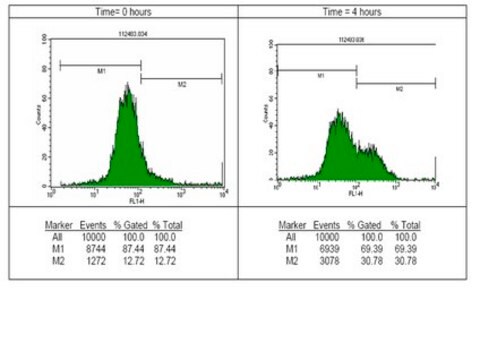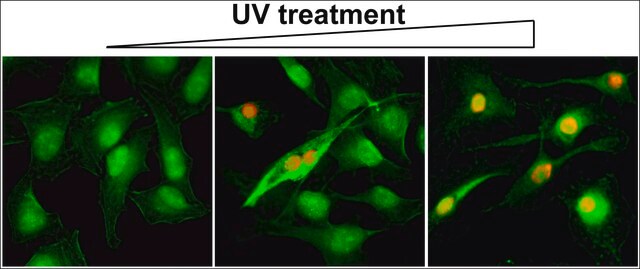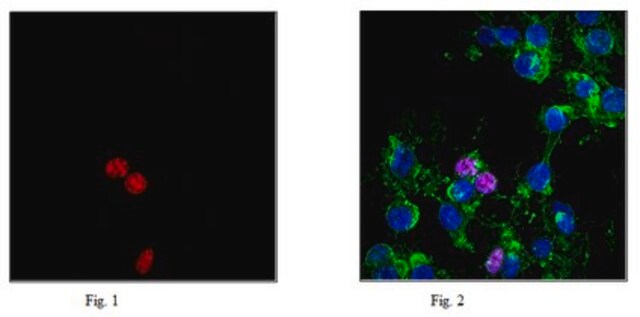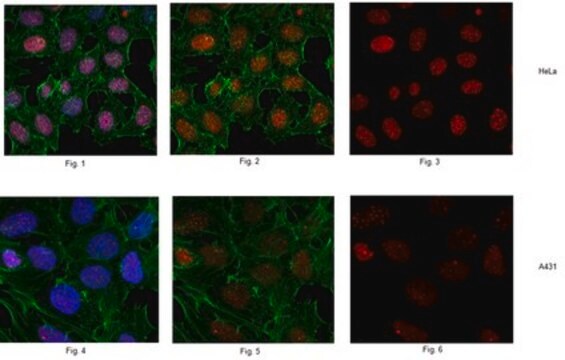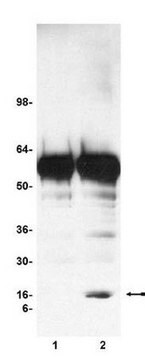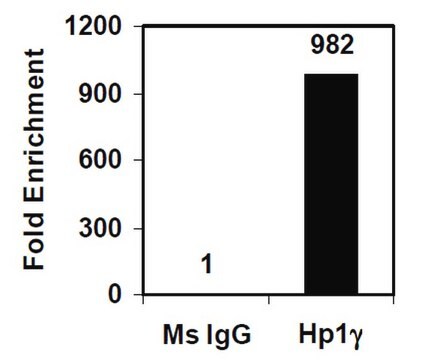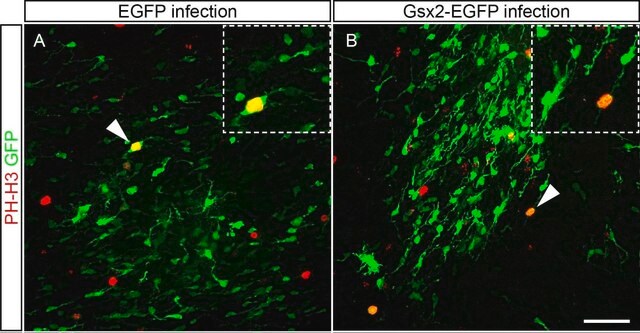17-344
H2A.X Phosphorylation Assay Kit (Flow Cytometry)
The H2A.X Phosphorylation Assay Kit (Flow cytometry) is a cell based assay formatted for flow cytometric detection of levels of phosphorylated Histone H2A.X.
Recommended Products
Quality Level
manufacturer/tradename
Upstate®
technique(s)
activity assay: suitable
flow cytometry: suitable
NCBI accession no.
UniProt accession no.
detection method
fluorometric
shipped in
dry ice
Related Categories
General description
The H2A.X Phosphorylation Assay Kit (Flow cytometry) is a cell based assay formatted for flow cytometric detection of levels of phosphorylated Histone H2A.X. Cells are cultured in microplates, treated with agents that induce DNA damage or apoptosis, which stimulates H2A.X phosphorylation. Cells are then fixed and permeabilized in preparation for staining and detection. Histone H2A.X phosphorylated at serine 139 is detected by the addition of the anti-phospho-Histone H2A.X, FITC conjugate. Cells are then scanned in a flow cytometer to quantitate the number of cells staining positive for phosphorylated Histone H2A.X.
Application
Neuroscience
Neurodegenerative Diseases
Packaging
Components
Normal Mouse IgG, FITC conjugate (Cat.# 12-487)
16X Fixation Solution
10X Permeabilization Solution
10X Wash Solution
Quality
Legal Information
Disclaimer
Signal Word
Danger
Hazard Statements
Precautionary Statements
Hazard Classifications
Acute Tox. 2 Inhalation - Acute Tox. 3 Dermal - Acute Tox. 3 Oral - Carc. 1B - Eye Dam. 1 - Flam. Liq. 2 - Muta. 2 - Skin Corr. 1B - Skin Sens. 1 - STOT SE 1 - STOT SE 3
Target Organs
Respiratory system
Storage Class Code
3 - Flammable liquids
WGK
WGK 3
Certificates of Analysis (COA)
Search for Certificates of Analysis (COA) by entering the products Lot/Batch Number. Lot and Batch Numbers can be found on a product’s label following the words ‘Lot’ or ‘Batch’.
Already Own This Product?
Documents related to the products that you have purchased in the past have been gathered in the Document Library for your convenience.
Difficulty Finding Your Product Or Lot/Batch Number?
How to Find the Product Number
Product numbers are combined with Pack Sizes/Quantity when displayed on the website (example: T1503-25G). Please make sure you enter ONLY the product number in the Product Number field (example: T1503).
Example:
Additional examples:
705578-5MG-PW
PL860-CGA/SHF-1EA
MMYOMAG-74K-13
1000309185
enter as 1.000309185)
Having trouble? Feel free to contact Technical Service for assistance.
How to Find a Lot/Batch Number for COA
Lot and Batch Numbers can be found on a product's label following the words 'Lot' or 'Batch'.
Aldrich Products
For a lot number such as TO09019TO, enter it as 09019TO (without the first two letters 'TO').
For a lot number with a filling-code such as 05427ES-021, enter it as 05427ES (without the filling-code '-021').
For a lot number with a filling-code such as STBB0728K9, enter it as STBB0728 without the filling-code 'K9'.
Not Finding What You Are Looking For?
In some cases, a COA may not be available online. If your search was unable to find the COA you can request one.
Our team of scientists has experience in all areas of research including Life Science, Material Science, Chemical Synthesis, Chromatography, Analytical and many others.
Contact Technical Service